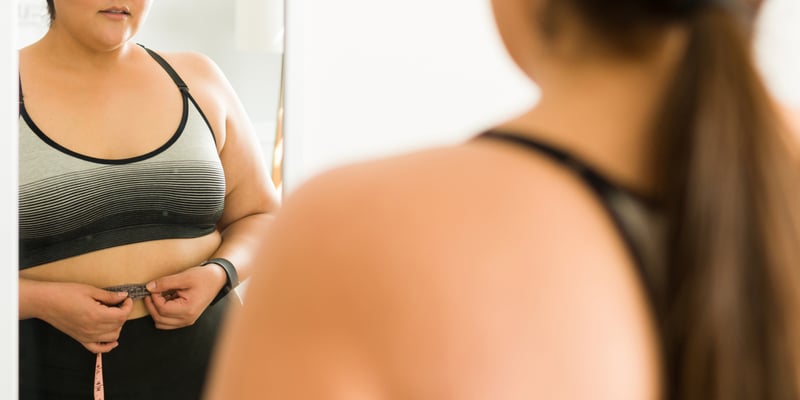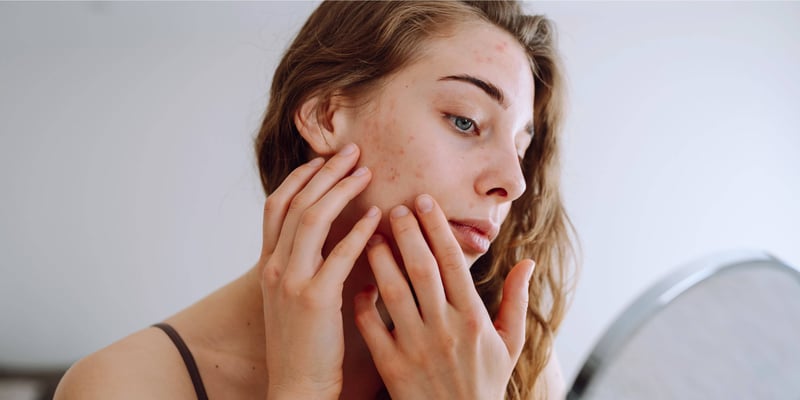Stress affects us in many ways, and sometimes, it shows up on our skin. If you’ve noticed red, itchy patches suddenly appearing, you might be dealing with a stress or anxiety rash. This guide will help you understand what these rashes look like, why they happen, and how you can treat them effectively.
What is a stress rash?
A stress rash is a skin reaction triggered by stress or anxiety. When you're stressed, your body releases hormones like cortisol, which can cause inflammation and lead to the development of a rash. The most common form of a stress rash is hives – raised, swollen patches on the skin that can vary in size, from small spots to large patches that sometimes connect to form even bigger welts [1][2].
Causes of stress and anxiety rashes
A stress rash is caused by your body's reaction to stress or anxiety. When you're under stress, your immune system reacts differently, which can make your skin more sensitive and prone to rashes. Emotional stress triggers the release of chemicals in the body, leading to inflammation and the appearance of hives [3][4]. Factors like neglecting skincare, increased sweating, and heightened sensitivity to allergens can also contribute to the development of a stress rash [5].
Symptoms and appearance
What does a stress rash look like?
A stress rash typically appears as hives—raised, red or pink bumps on lighter skin tones, and slightly darker or different shades on darker skin tones. These bumps can be itchy, and some people might also feel a burning or tingling sensation. The rash can appear in clusters or as larger welts that may merge [2][6].
What does an anxiety rash look like?
An anxiety rash looks like a stress rash and is often indistinguishable from it. It typically presents as red or pink hives that can appear anywhere on the body, such as the face, neck, chest, arms, and even hands [1][4]. The rash may burn, tingle, or itch.
Stress rash on different body parts
What does a stress rash look like on different body parts?
Stress rashes can show up anywhere on the body but are most commonly found on the face, neck, chest, and arms. On the face, they might look like small, red bumps, similar to acne. Stress rashes on the chest often appear as itchy, red patches or larger hives. The arms and legs might have welts that vary in size, and a stress hand rash can show up as small, itchy blisters, particularly on the palms and fingers [3][7]. If you're wondering what a stress rash looks like on the legs, it can resemble the rashes found on other parts of the body, appearing as red or pink patches that may spread or cluster together [8].
How to treat a stress rash?
To treat a stress rash, you can start with over-the-counter options:
- Antihistamine creams: These can help reduce itching and swelling [1][9].
- Moisturisers: Using a gentle, fragrance-free moisturiser can soothe the skin [3][10].
- Cold compresses: Applying a cold cloth to the rash can bring down swelling and provide relief from itching [2][11].
If the rash is on your neck, these treatments can be particularly helpful, as the neck is a sensitive area prone to irritation. If you're wondering how to get rid of a stress rash on the neck, these methods are a good starting point.
Medications
If home treatments don’t work, or if the rash is severe, you might need medication:
- Antihistamines: These tablets can help control the rash, especially if it’s widespread [6][7].
- Corticosteroids: For severe rashes, a doctor might prescribe a stronger treatment to reduce inflammation.
Prevention tips
While you can't always avoid stress, there are steps you can take to reduce the chances of developing a rash:
- Manage stress: Practices like meditation, deep breathing, and exercise can help keep stress levels down.#
- Maintain healthy skin: Stick to a regular skincare routine and keep your skin moisturised [9].
- Stay hydrated: Drinking plenty of water helps keep your skin healthy [4].
- Avoid known triggers:If certain foods or products irritate your skin, try to avoid them, especially when you’re stressed.
When to seek medical advice
Most stress rashes are mild and can be treated at home, but there are times when you should seek medical advice:
- If the rash covers a large portion of your body: This could indicate a more serious issue [1][3].
- If the rash is accompanied by severe symptoms: These include skin peeling, blisters, fever, or pain [5].
- If you have symptoms of a severe allergic reaction: Difficulty breathing, swelling of the face, lips, or throat, wheezing, fast heart rate, dizziness, or fainting could indicate anaphylaxis, which requires immediate medical attention [4].
- If the rash doesn’t improve with home treatment or persists for more than a few days: It’s best to consult a doctor to rule out other conditions and get the appropriate treatment [6].
How HealthHero can support you
If you’re struggling with a stress rash and need advice, HealthHero can connect you with a healthcare professional. They can offer guidance and recommend treatments to help manage your skin issues. Whether you're dealing with a stress rash on your face, chest, hands, or any other part of your body, HealthHero is here to support you.




